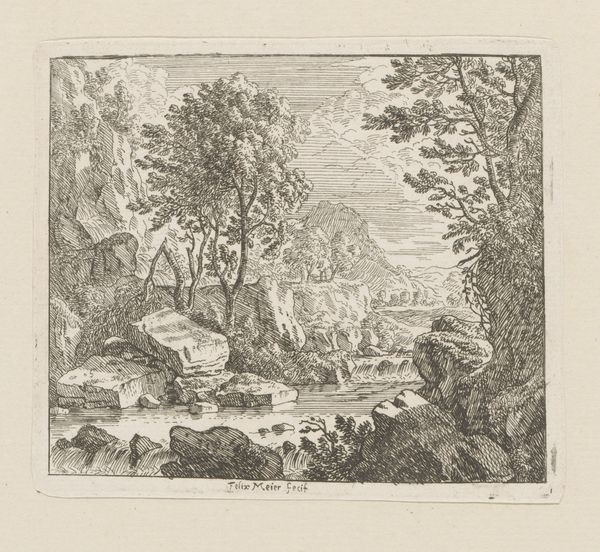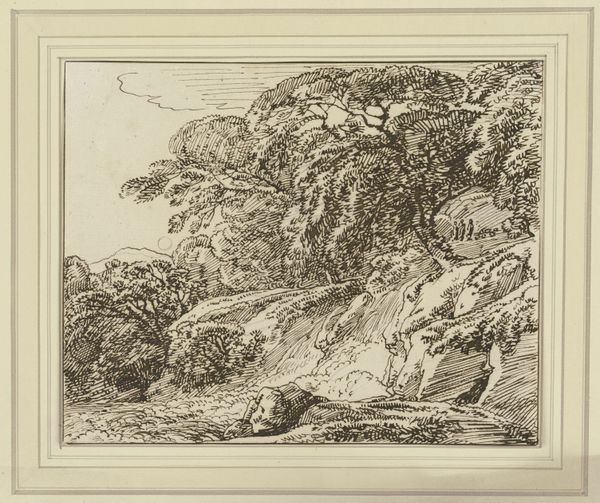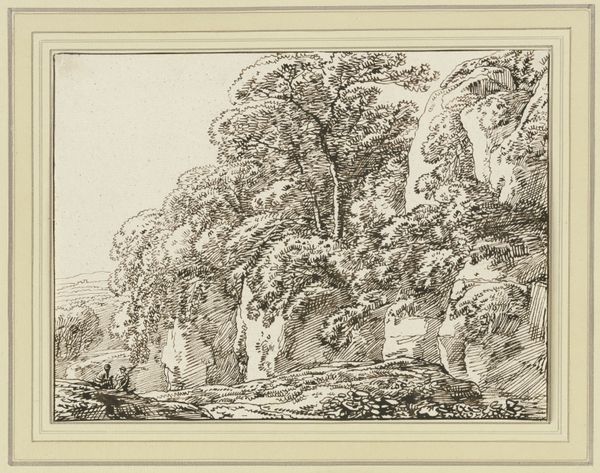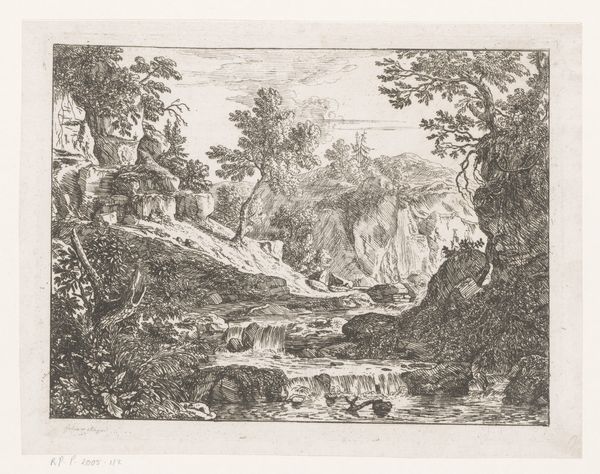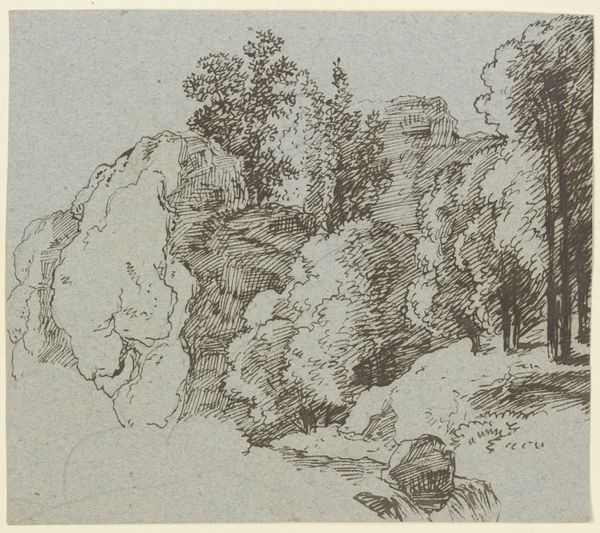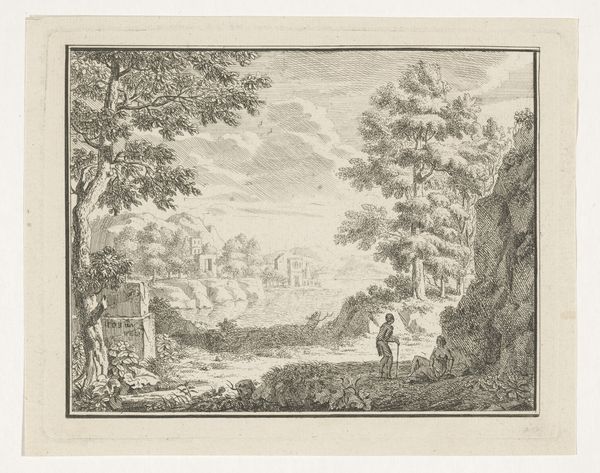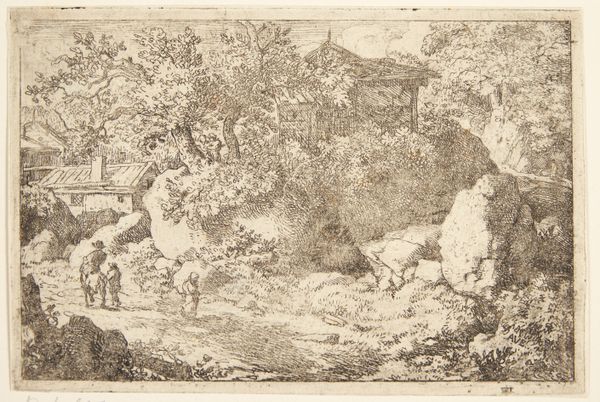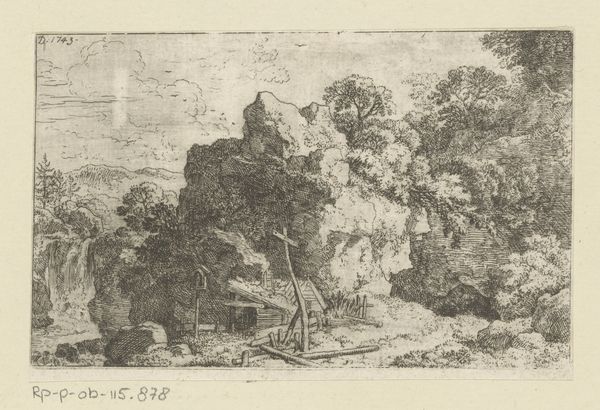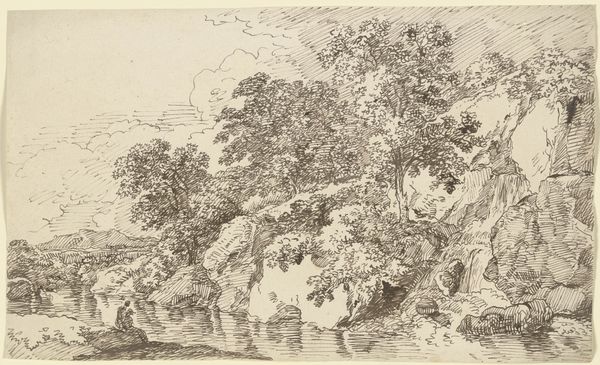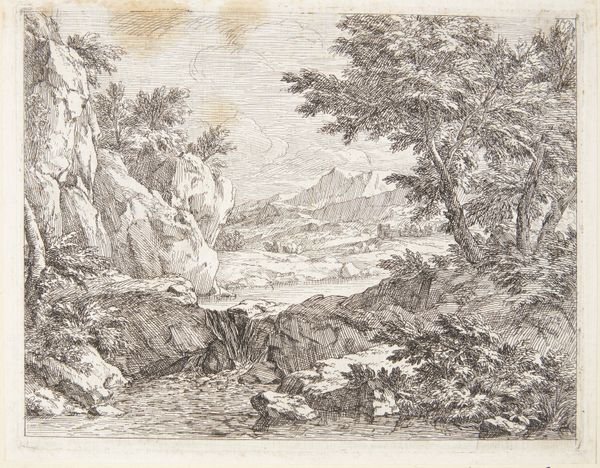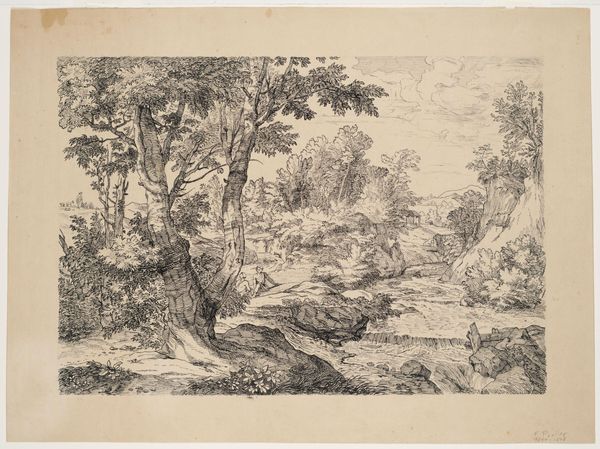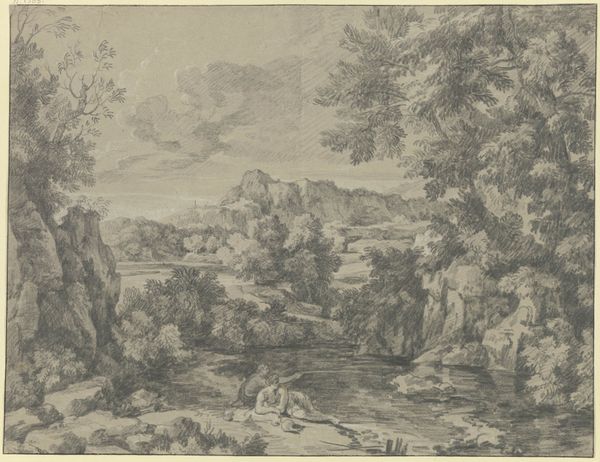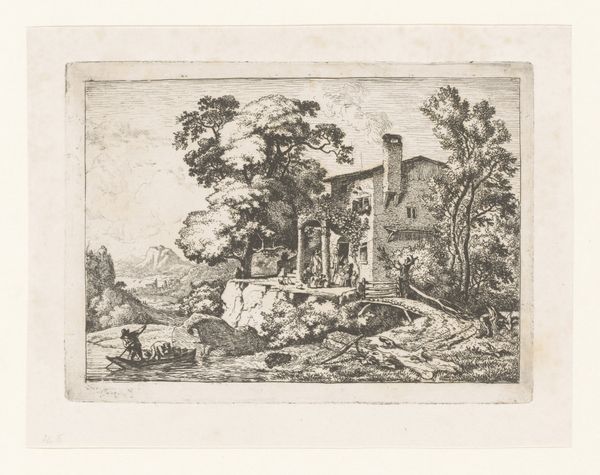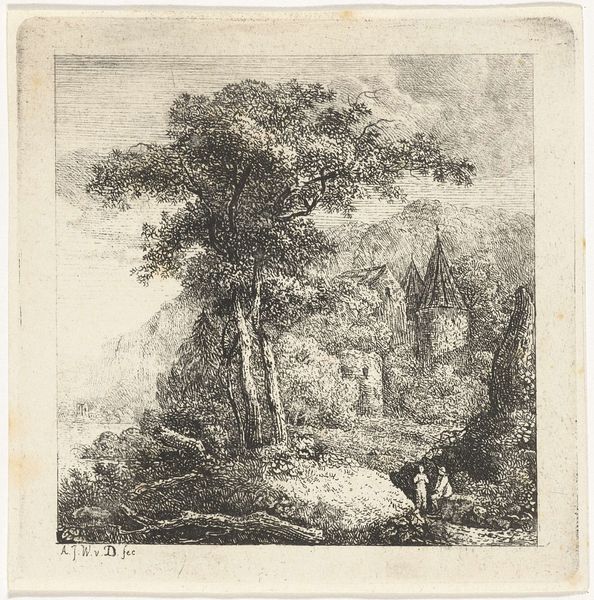
drawing, paper, ink, indian-ink, pen
#
drawing
#
aged paper
#
toned paper
#
pen drawing
#
landscape
#
paper
#
ink
#
indian-ink
#
pen-ink sketch
#
15_18th-century
#
pen
#
pencil art
Copyright: Public Domain
Franz Kobell created this pen and black ink drawing called, "Landscape with Waterfall, Tomb and Sarcophagus", sometime between 1764 and 1822. Kobell, working in Germany during the late 18th and early 19th centuries, found himself amidst the Enlightenment’s increasing emphasis on reason and empirical knowledge and a corresponding shift in artistic and cultural sensibilities. This drawing exemplifies the Romantic movement's fascination with nature as a source of sublime experience. The waterfall, rendered with meticulous detail, dominates the scene, evoking a sense of awe and power. Yet, the presence of the tomb and sarcophagus introduces a layer of melancholy, a contemplation of mortality that was characteristic of Romantic thought. Consider how Kobell intertwines themes of nature, history, and human existence in this piece. Are the figures on the sarcophagus idealized representations? Kobell invites us to reflect on the transience of human life and the enduring power of nature. The artwork remains a poignant reflection on the intersection of mortality, memory, and the natural world.
Comments
No comments
Be the first to comment and join the conversation on the ultimate creative platform.
